Mini Cooler
Applications
- Small tool cooling
- Needle cooling
- Blade cooling
- Lens grinding
Advantages
- Low cost
- Increases production rates
- Improves tolerances
- Quiet, compact
Accessories
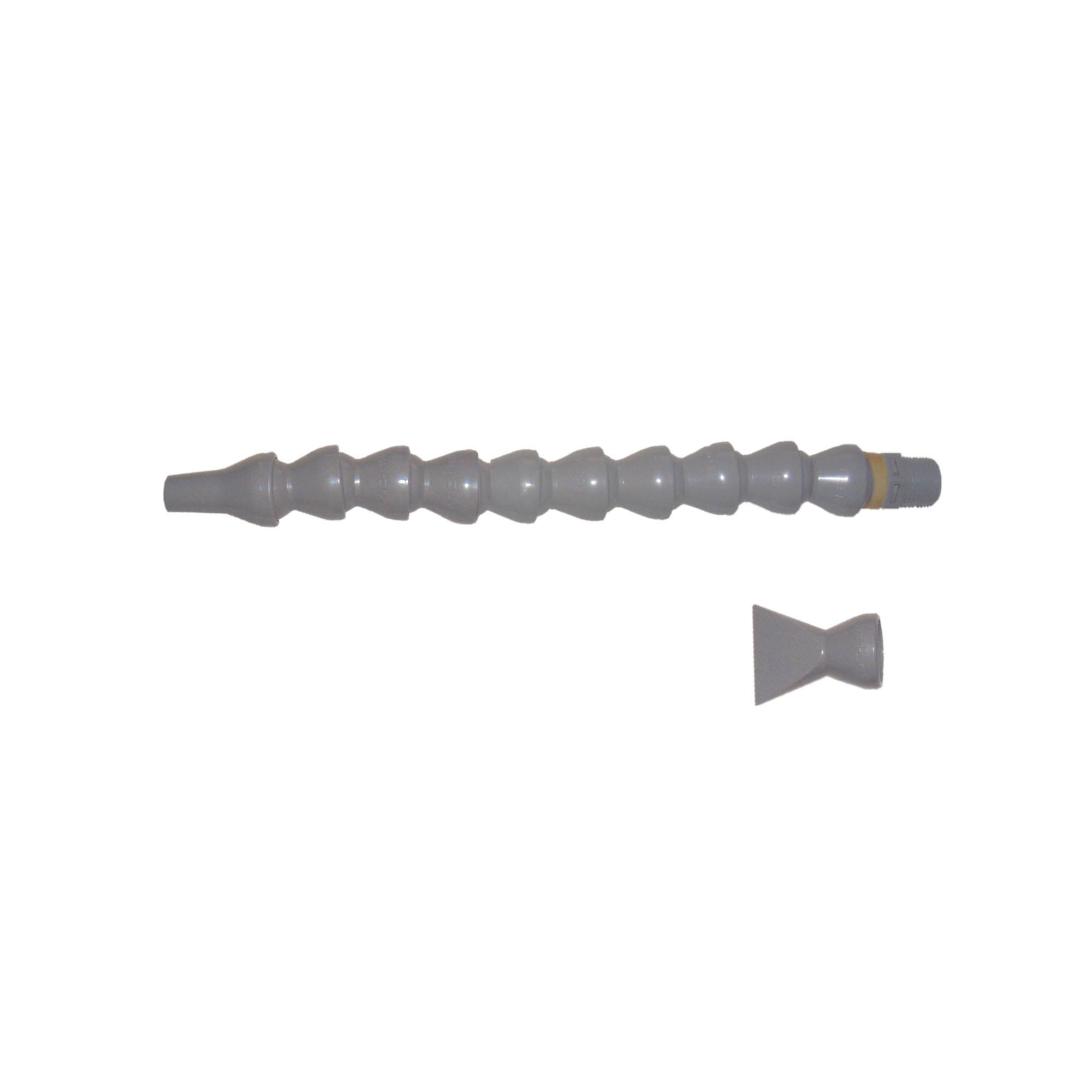
Mini Cooler Single Point Hose Kit – (included with the Model 3808 Mini Cooler System) is recommended for applications where a concentrated airflow is needed such as sewing operations.
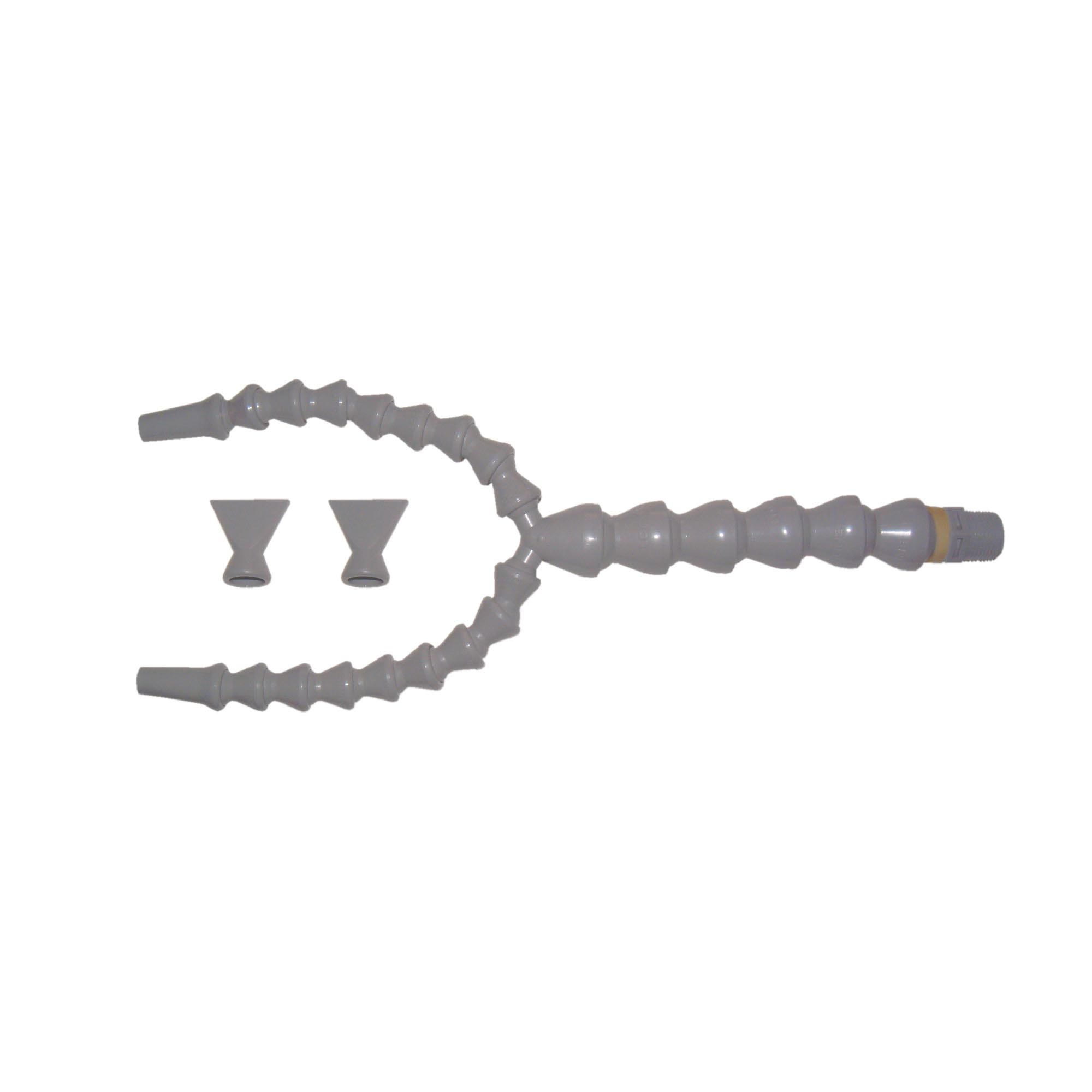
Mini Cooler Dual Point Hose Kit - (included with the Model 3308 Mini Cooler System) is recommended for applications where the heat is generated over a larger surface area such as lens grinding.
Mini Cooler Systems
Two systems are available:
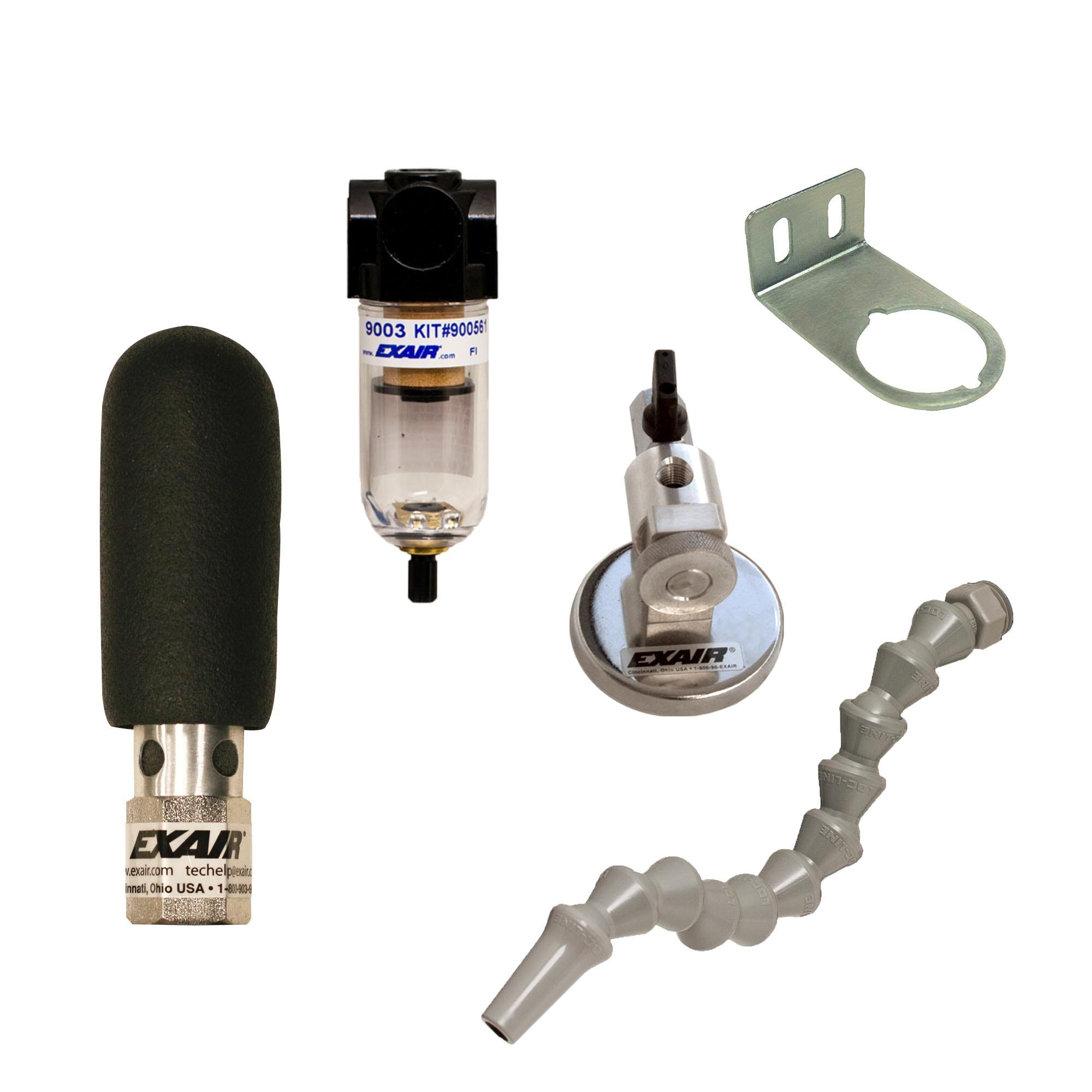
Model 3808 Mini Cooler System (one cold outlet) includes Mini Cooler, Mini Single Point Hose Kit, Swivel Magnetic Base and Manual Drain Filter Separator with Mounting Bracket.

Model 3308 Mini Cooler System (two cold outlets) includes Mini Cooler, Mini Dual Point Hose Kit, Swivel Magnetic Base and Manual Drain Filter Separator with Mounting Bracket.
Mini Cooler Specifications | |||||
| Air Consumption | Temperature Out | Sound @ 3' (914mm) | |||
| SCFM | SLPM | ºF | ºC | dBA | Inlet |
| 8 | 227 | 20 | -7 | 76 | 1/4 NPT |
| Supply air at 100 PSIG (6.9 BAR) & 70°F (21°C) | |||||
Mini Cooler Dimensions |
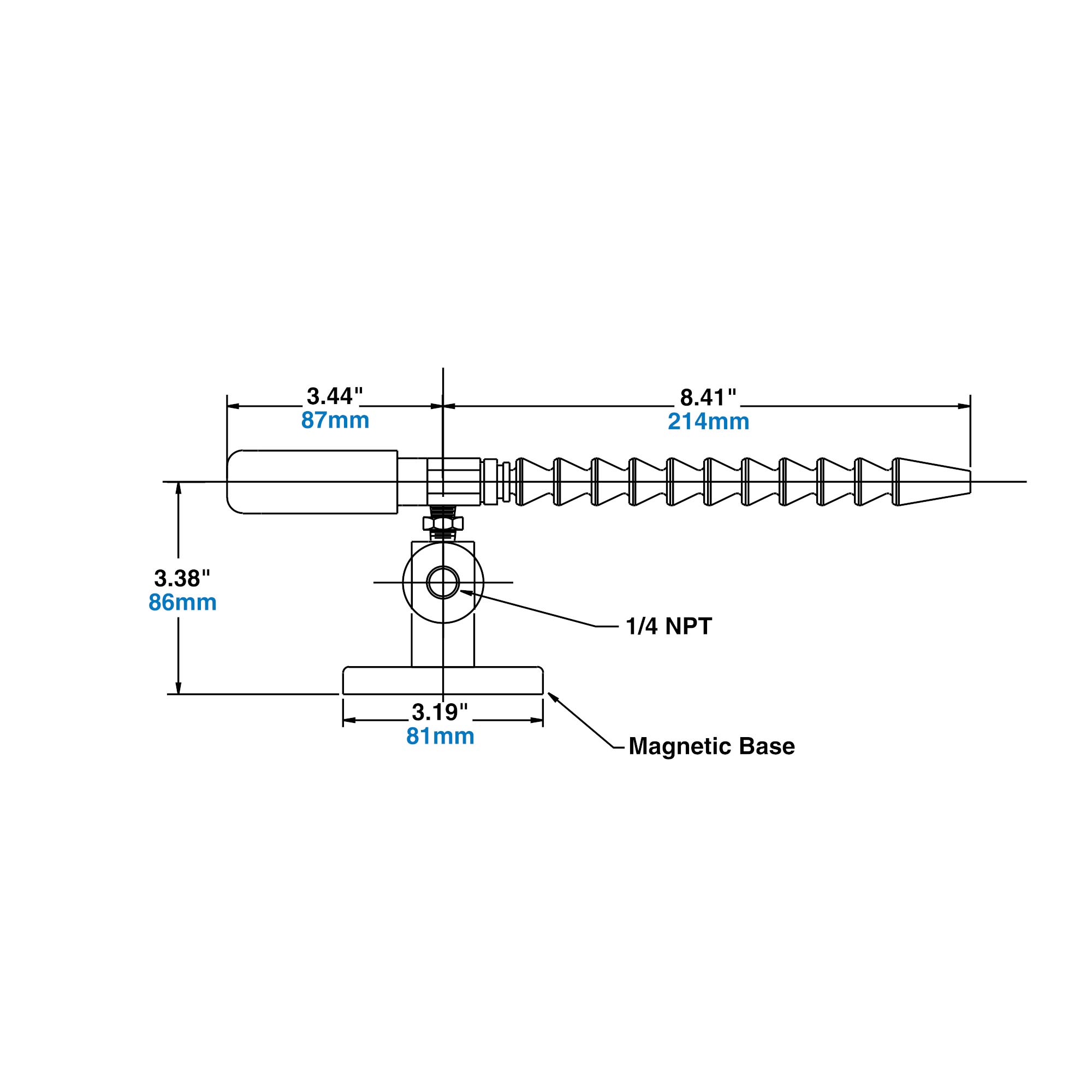 |
How the Mini Cooler Works |
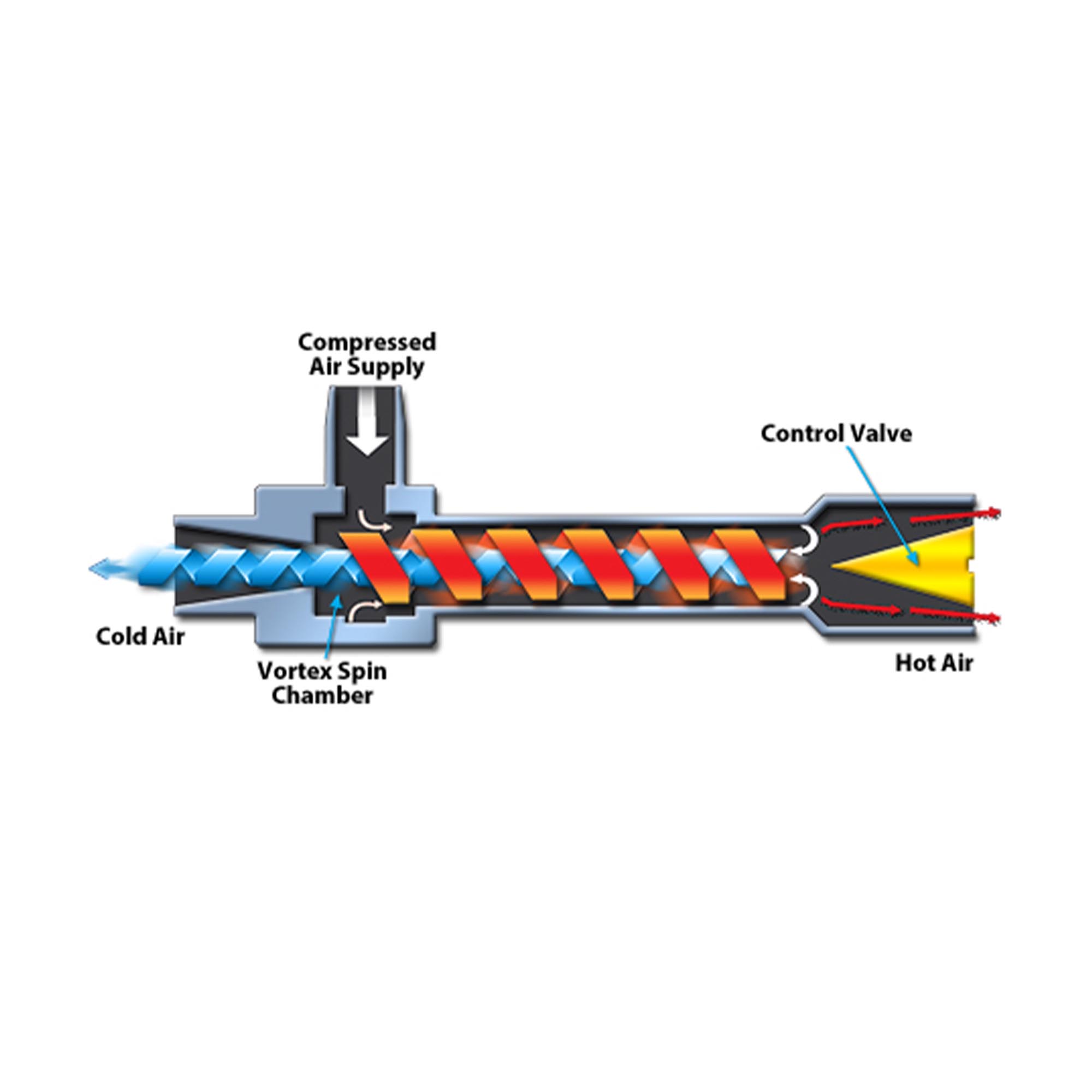 |
The Mini Cooler incorporates a vortex tube to convert a small amount of compressed air into two low pressure streams, one moving within the other in opposite directions. The two airstreams exchange heat, producing cold air from one end of the tube and hot air from the other. A flexible hose directs the cold airstream at the surface to be cooled. |
Mini Cooler Standards and Certifications


EXAIR Mini Coolers comply with OSHA's Safety Requirements, the EU General Product Safety Directive (2001/95/EC) and meet the noise limitation requirements of the EU Machinery Directive (2006/42/EC). All sound level measurements are taken at 3 feet away.

Look for this symbol to designate conflict mineral free products throughout our website. EXAIR supports Section 1502 of the Dodd-Frank Wall Street Reform and Consumer Protection Act and we are committed to compliance with the conflict minerals rule in order to curb the illicit trade of tin, tantalum, tungsten and gold in the DRC region. EXAIR is using the CMRT 3.02 template to document our supply chain and commitment to conflict free products.

A Phenomenon of Physics
The two questions we’re most often asked about the vortex tube are, “How long has it been around?” and “How does the thing work?” The following is a brief history and theory of the vortex tube.
The vortex tube was invented quite by accident in 1928. George Ranque, a French physics student, was experimenting with a vortex-type pump he had developed when he noticed warm air exhausting from one end, and cold air from the other. Ranque soon forgot about his pump and started a small firm to exploit the commercial potential for this strange device that produced hot and cold air with no moving parts. However, it soon failed and the vortex tube slipped into obscurity until 1945 when Rudolph Hilsch, a German physicist, published a widely read scientific paper on the device.
Much earlier, the great nineteenth century physicist, James Clerk Maxwell, postulated that since heat involves the movement of molecules, we might someday be able to get hot and cold air from the same device with the help of a “friendly little demon” who would sort out and separate the hot and cold molecules of air.
Thus, the vortex tube has been variously known as the “Ranque Vortex Tube”, the “Hilsch Tube”, the “Ranque-Hilsch Tube”, and “Maxwell’s Demon”. By any name, it has in recent years gained acceptance as a simple, reliable and low cost answer to a wide variety of industrial spot cooling problems.
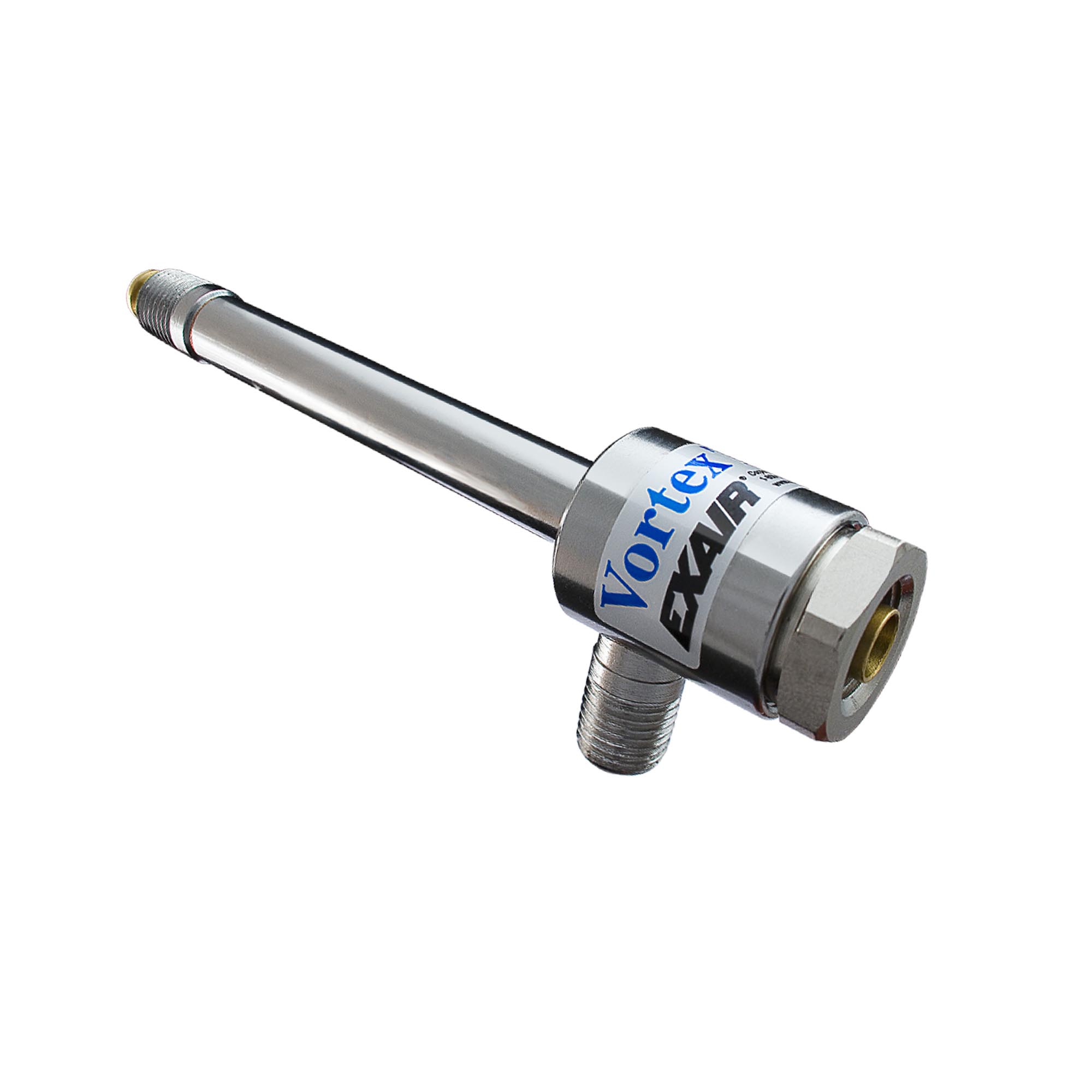
A vortex tube uses compressed air as a power source, has no moving parts, and produces hot air from one end and cold air from the other. The volume and temperature of these two airstreams are adjustable with a valve built into the hot air exhaust. Temperatures as low as -50°F (-46°C) and as high as +260°F (+127°C) are possible.
Theories abound regarding the dynamics of a vortex tube. Here is one widely accepted explanation of the phenomenon:
Compressed air is supplied to the vortex tube and passes through nozzles that are tangent to an internal counterbore. These nozzles set the air in a vortex motion. This spinning stream of air turns 90° and passes down the hot tube in the form of a spinning shell, similar to a tornado. A valve at one end of the tube allows some of the warmed air to escape. What does not escape, heads back down the tube as a second vortex inside the low-pressure area of the larger vortex. This inner vortex loses heat and exhausts through the other end as cold air.
While one airstream moves up the tube and the other down it, both rotate in the same direction at the same angular velocity. That is, a particle in the inner stream completes one rotation in the same amount of time as a particle in the outer stream. However, because of the principle of conservation of angular momentum, the rotational speed of the smaller vortex might be expected to increase. (The conservation principle is demonstrated by spinning skaters who can slow or speed up their spin by extending or drawing in their arms.) But in the vortex tube, the speed of the inner vortex remains the same. Angular momentum has been lost from the inner vortex. The energy that is lost shows up as heat in the outer vortex. Thus the outer vortex becomes warm, and the inner vortex is cooled.
-
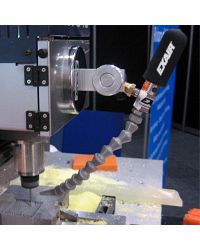 This Mini Cooler keeps a small
This Mini Cooler keeps a small -
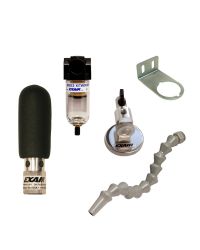 Model 3808 Mini Cooler System
Model 3808 Mini Cooler System -
 Model 3308 Mini Cooler System
Model 3308 Mini Cooler System -
 Model 3708 Mini Cooler only
Model 3708 Mini Cooler only

